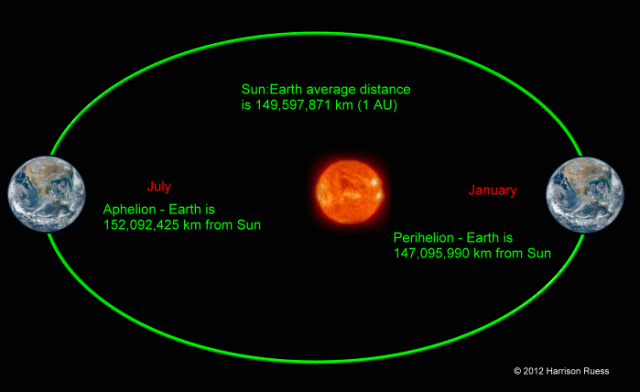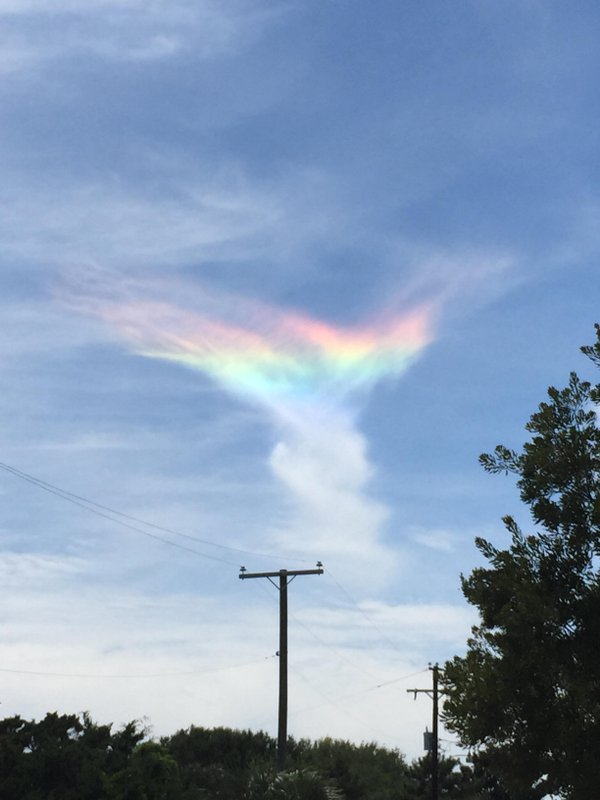By WeatherFlow meteorologist Shea Gibson 8/14/16
There has been quite a unique optical phenomenon occurring along the SC coast lately with reference to sunrise and sunset beams stretching across the sky. I witnessed a somewhat rare catch Friday morning over Charleston, SC as sunbeams appeared not only at the sunrise horizon, but over the opposite side of the sky as well. I was able to snap pics of a what are known as “crepuscular rays” and “anticrepuscular rays” at the same time. I know they sound like something out of horror movie that comes crawling out of the mucky swamp, but those are in fact the meteorological names for them. Crepuscular rays, also known as “sunbeams”, form as the sun protrudes from behind cloud objects in the sky. The word comes from the Latin word “crepusculum” – meaning “twighlight”. They are actually parallel in the sky, but appear to beam upwards. They mainly occur at dawn or evening/dusk with the decreasing (acute) angle of the sun. Meanwhile on the opposite side of the sky, the optical effect of these parallel rays stretching across can sometimes show along the antisolar point…hence “anticrepuscular rays” – or they can also be called antisolar rays if you like.
Here is the sunrise Friday morning with some crepuscular rays beaming through.
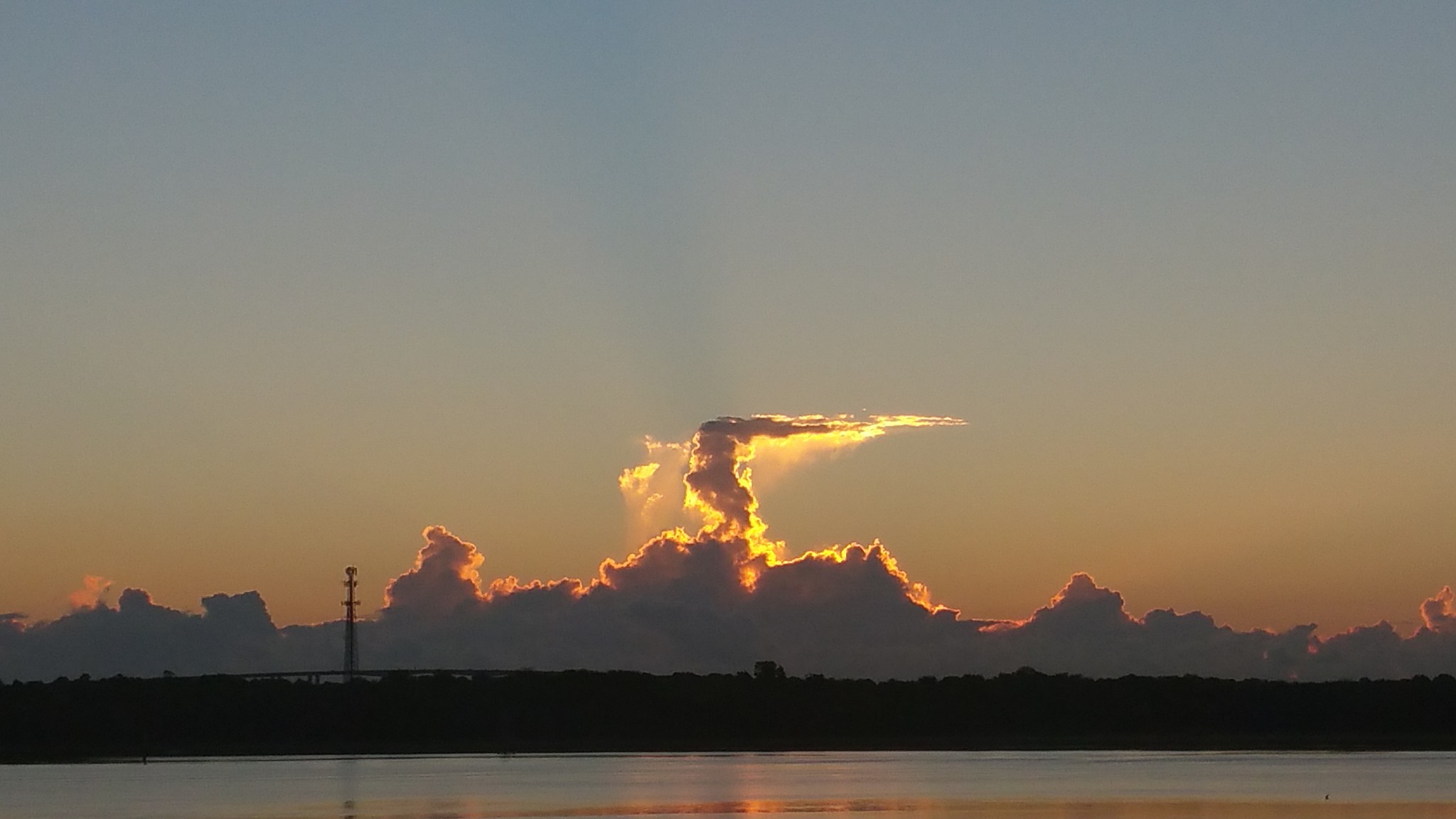
And here is the opposite side of the sky where the anticrepuscular rays are slightly more pronounced:
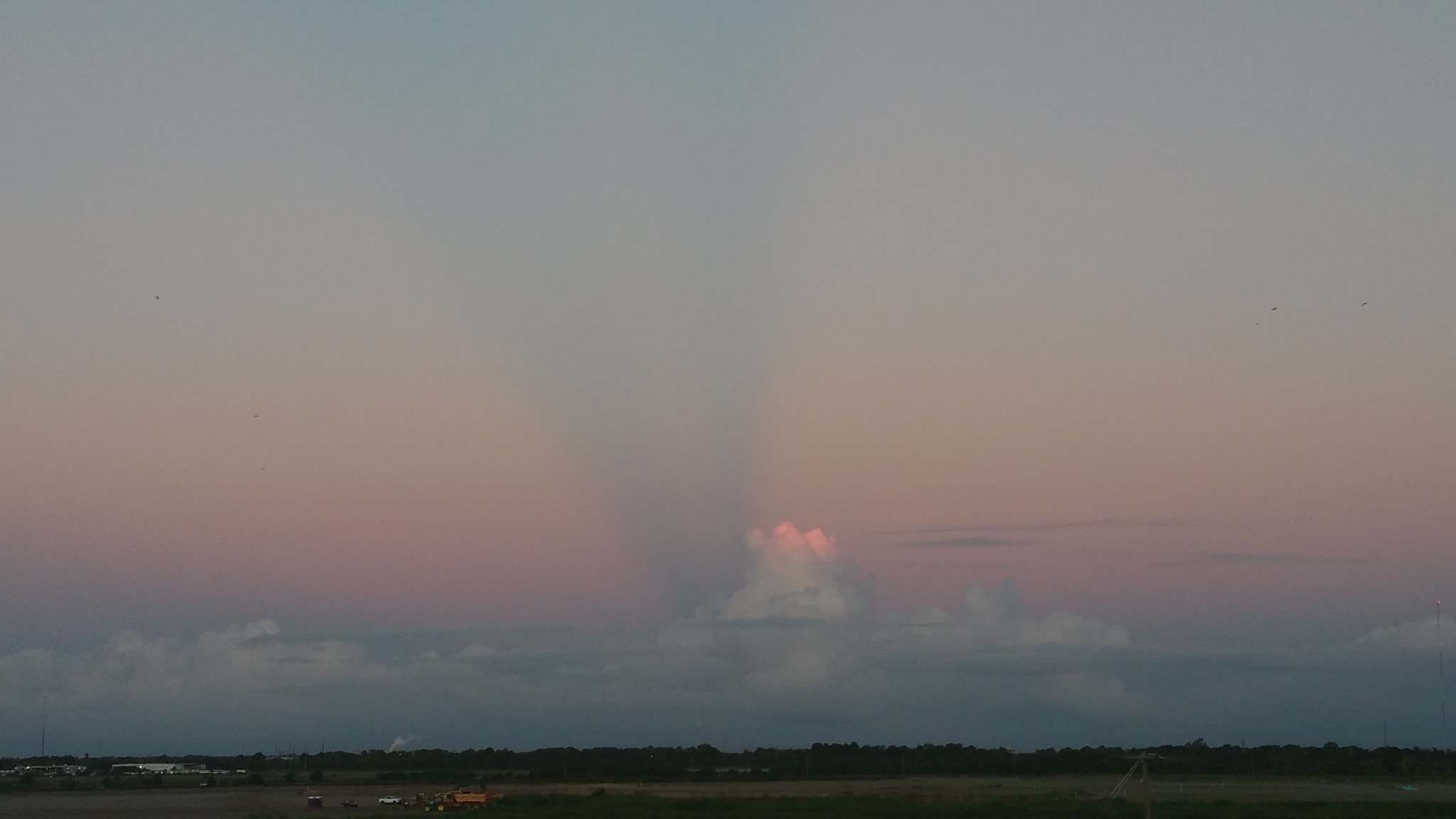
Think of a road in a desert where you look in either direction and the road gets smaller and smaller until it becomes point. Same optical effect.

Or train tracks if you prefer (pic by Mr. and Mrs. Globetrot):

The anticrepuscular ray event really blossomed the next day on Saturday, August 13, 2016 during sunset that gave quite a few people something truly unique to see.
Here is a pic from H. Mikell Evatt of Sandlapper Water Tours from over the water in the Charleston Harbor while underway:
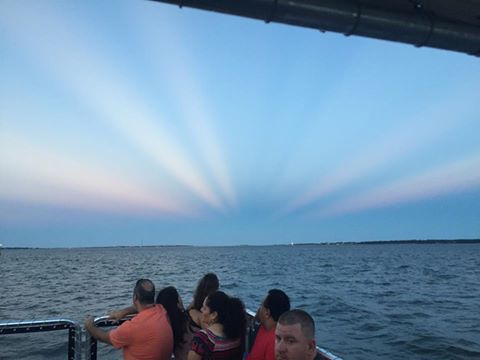
Here was the opposite side of sky where the sun was actually setting, which was creating the anticrepuscular rays that were so pronounced to the East. This picture was from Mike Wakefield of Palmetto Powered Paragliding near John’s Island, SC.
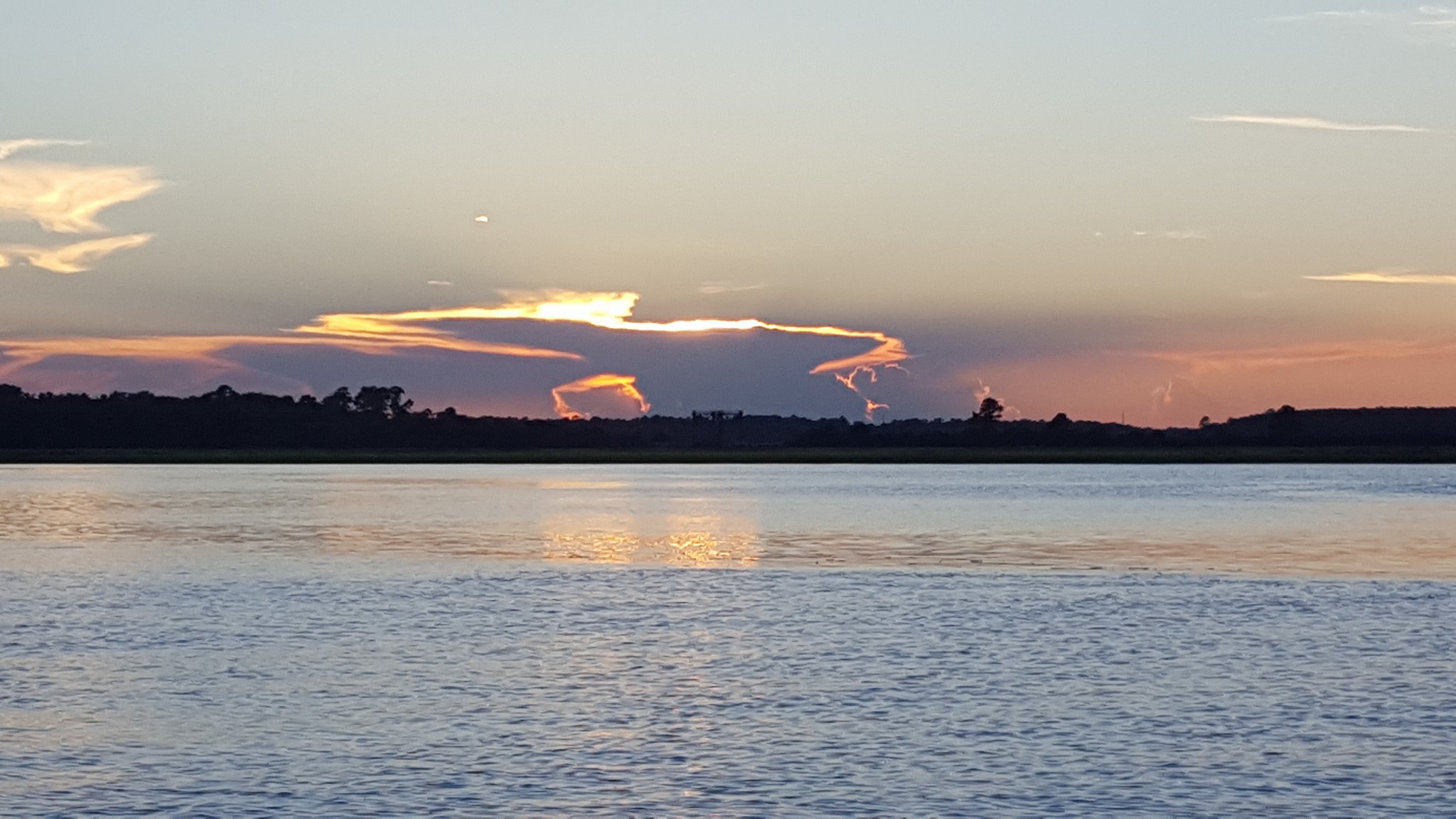
This one from Cacky Rivers at Sullivan’s Island, Station 22, SC with her daughter under the radiating beams – definitely a picture for the family wall!

And another great one from Charleston local Todd Jones with quite a bit of color -August 13.
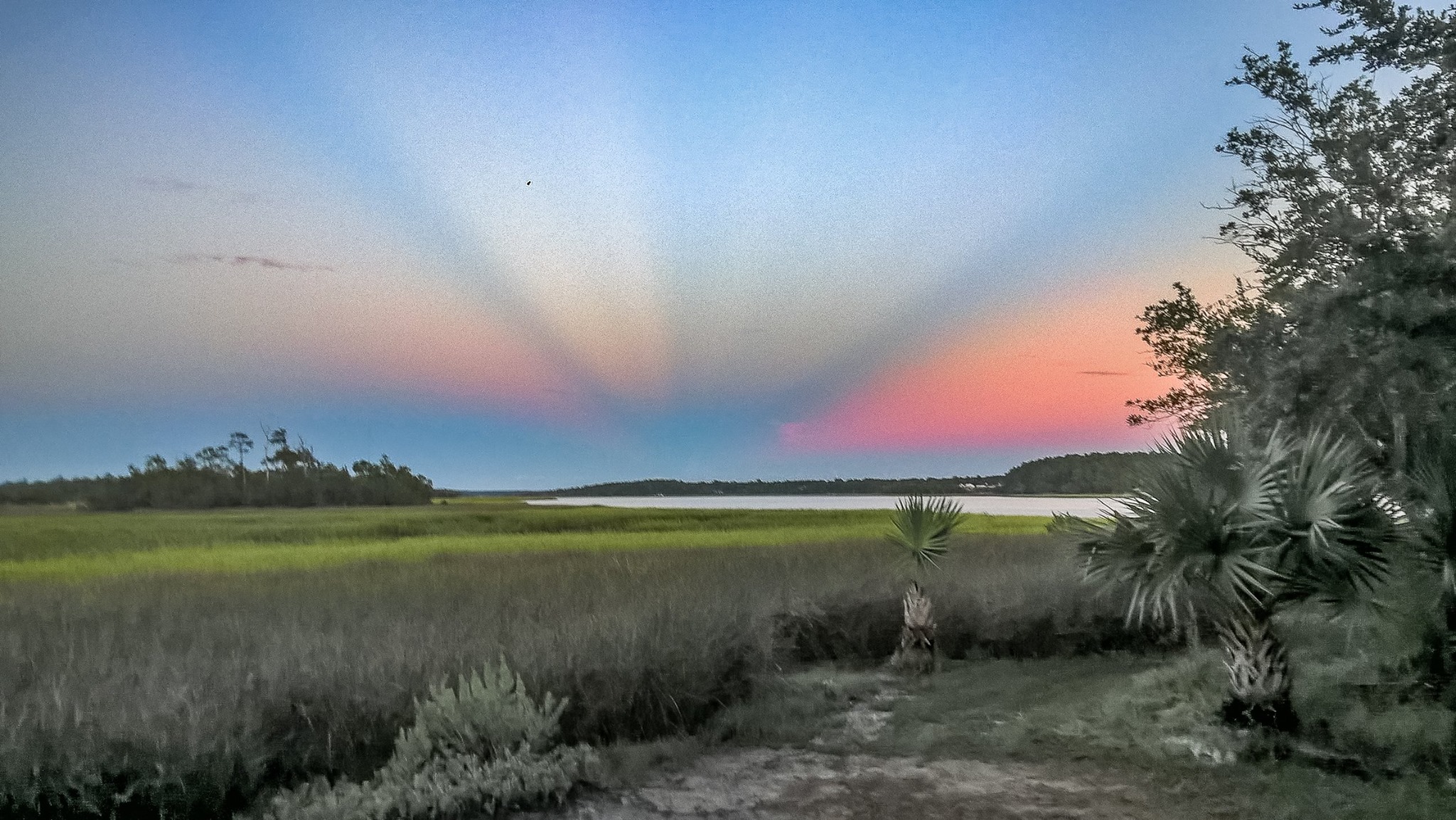
AUGUST 14 -evening to dusk hours:
One more from Todd Jones with a waxing gibbous moon at 80.8%.
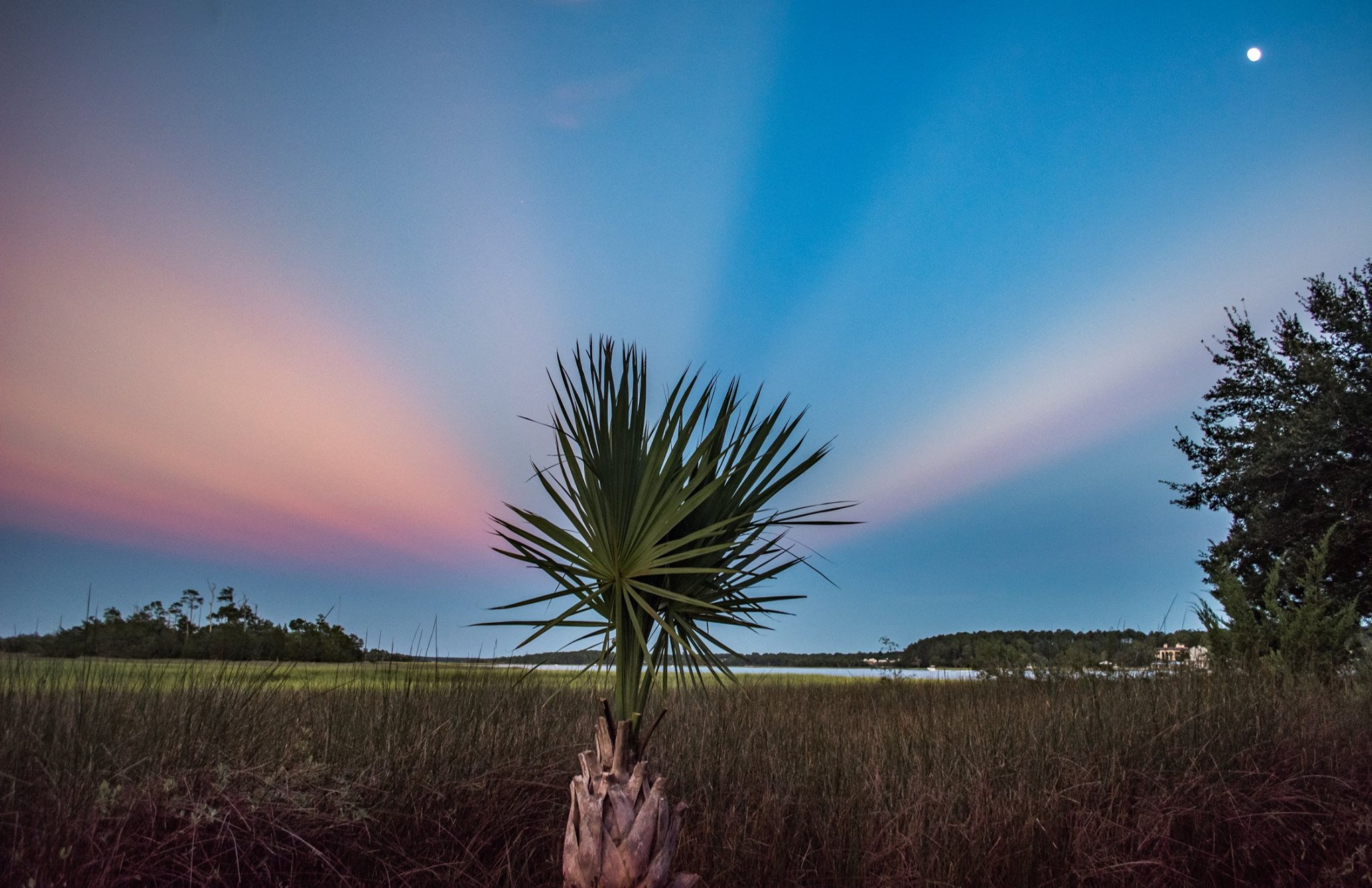
And the sunset shot with originating crepuscular rays from Thomas F. Glave (Marsh-side IOP weather station up front).
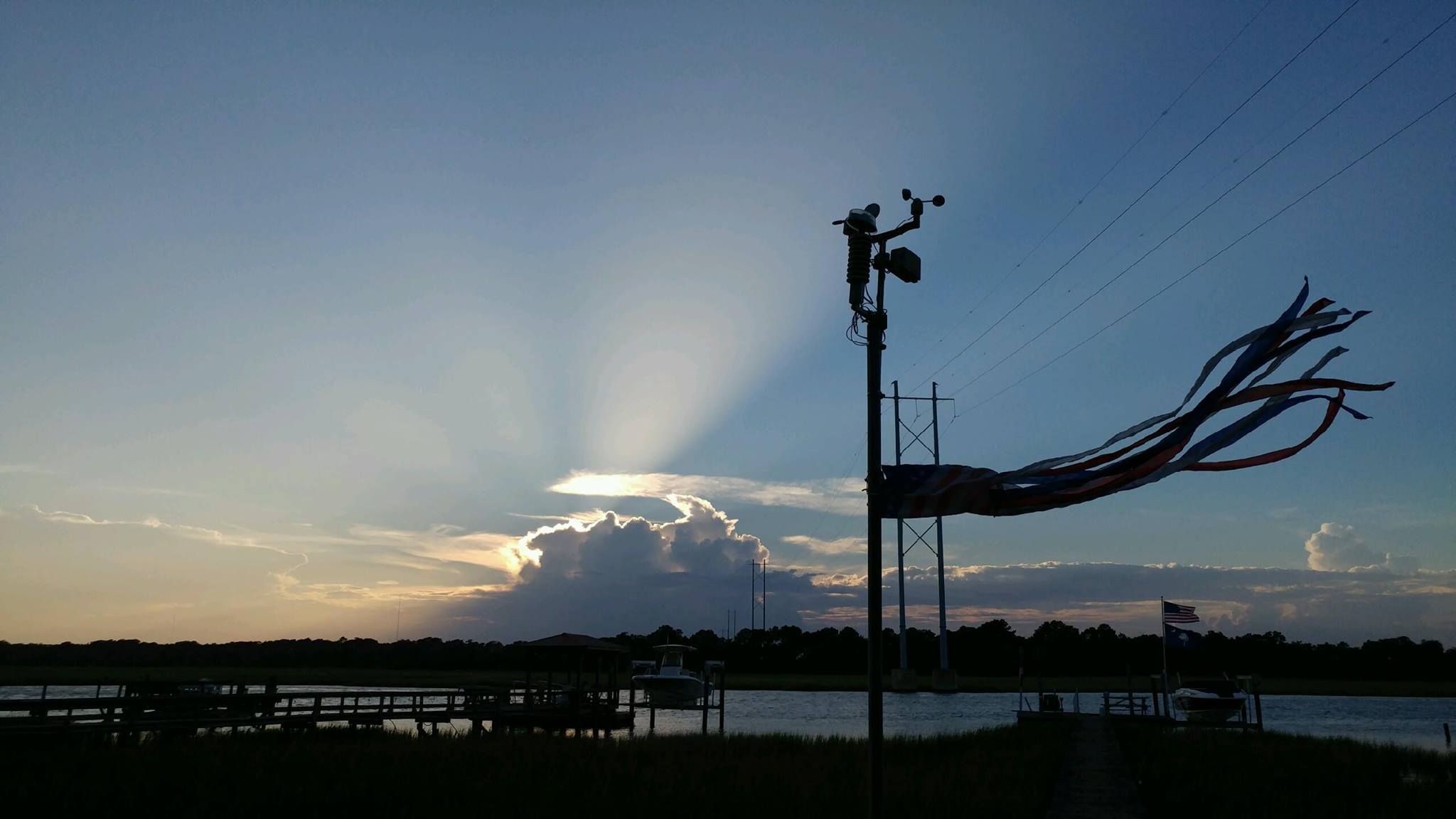
Now the question is why is this happening? Is it just from horizon cloud effect? Is there another, more mysterious scientific reason? You almost want to think of what people thought 2000 years ago of this type of heavenly occurrence…and it is definitely the stuff of legends. I haven’t seen it this pronounced before in the Charleston area, but then again, honestly I have not been looking for it as much over the years until now since it has shown so beautifully. One thing I consider is the position of the Earth and angle of the sun during this time of the year and perhaps why it is happening more in August.
Most may agree with it just being the right angle and right timing for it….but could there be some connection with the angle of sunrise/sunset with cloud objects in the sky creating a higher illumination factor?
I did check a great little app I like to use called the Photographer’s Ephemeris. Even in meteorology, it is a great tool to use because of its practical spatial and temporal applications with our relationship to the sun and moon. It helps us understand more about the sunrise not always being “East” and sunset always being “West” as we learned as children in school. There is variation of this every day. Here is a compass rose to see the angles and directions for basic understanding.
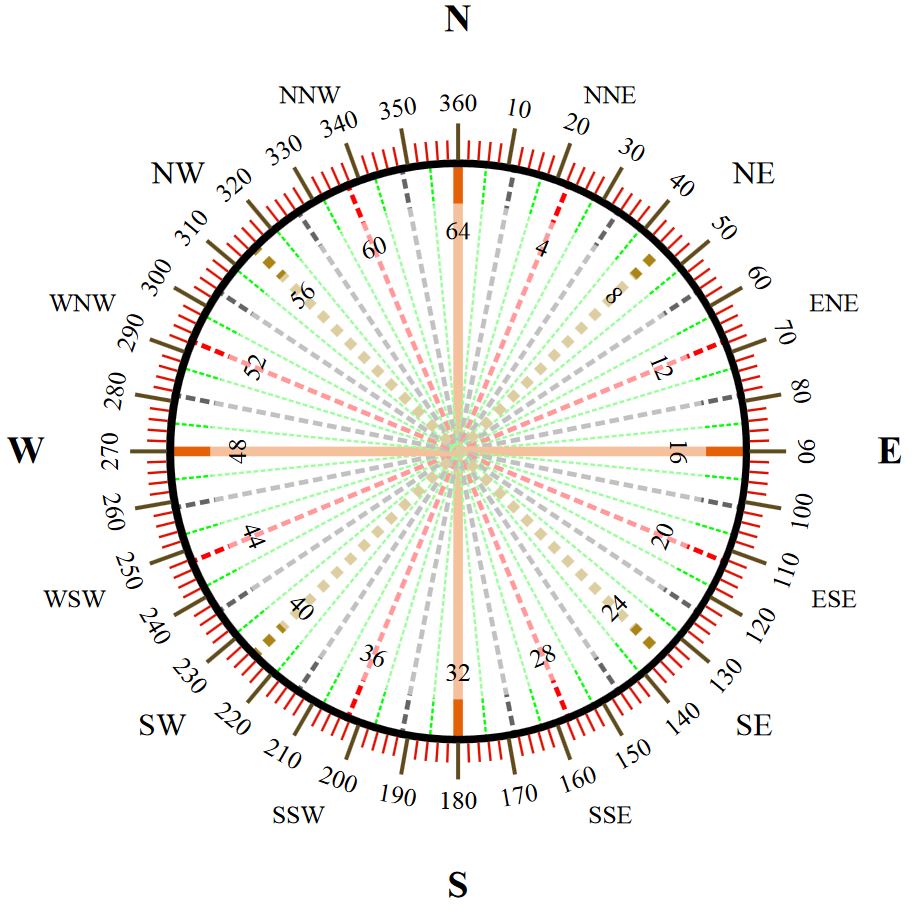
Here is the Friday morning screenshot of the sunrise/sunset angles and moonrise/moonset angles (azimuths). Sunrise was shown at 71.8° (actual ENE direction) and sunset at 288° (WNW direction).
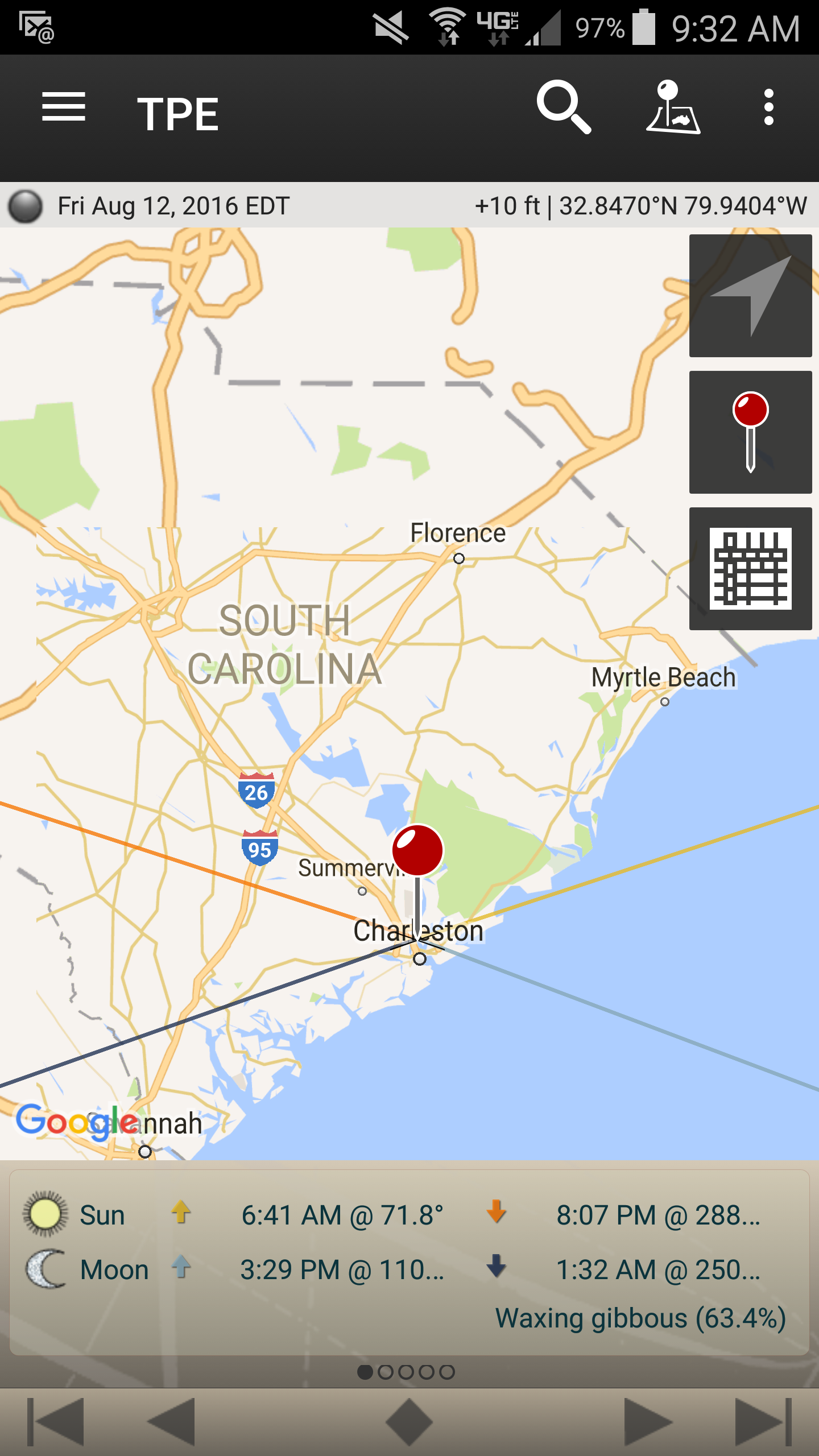
And here is the Saturday screenshot with sunrise at 72.2° (ENE) and sunset at 287° (WNW).

Some better perspective of sunset angle from Saturday from Solar System Scope:

Seeing these visuals, we can tell that the anticrepuscular rays do not line up directly with where the previous sunrise or sunset was- they are parallel in nature and are “directionally” proportional to the horizon origination point. In other words…the anticrepuscalar rays are not indicative of where the sun would be in the sky if the time tables were turned.
As far as position of the Earth right now…we peaked during the Aphelion in July and are starting the revolution phase back to Perihelion as we slide from summer–>fall–>winter over the next several months.

Whether or not this has anything to do with the phenomenon for right now along the SC Coast has yet to be determined, so if any of you astronomers out there would like to chime in, please let me know if you can provide any correlation to this event for this time of the year in the SE Region.
Until then, I’ll be logging it for next year to see if there is a pattern because sometimes, the good old fashioned way to find a pattern is to start somewhere. Would be nice to put these into the forecast right?
8/14/16 Update: Seems that we are also seeing circumhorizontal arcing (some call them firebows) in the sky as well during mainly midday/early afternoon hours, which may further the case for the specific angle of the sun in relation to optical effects. Not to be confused with cloud iridescence, which is a different type of occurrence. Many of the higher upper cirrus clouds we cannot see unless provided the correct light at the correct angle. With a mostly invisible halo effect, we may get patchy glimpses of it where the colors show. Red light is common along the top of it.
Here is a picture from Kostya Bulgakov last year August 16, 2015 that got many heads turned. This is called an “angel sylph” formation with refractive coloration high up.
And a couple of slightly less pronounced formations today (August 14, 2016) from Mary Chris Garner and Captain Tripp Hanna – will be watching next few days for anything similar!
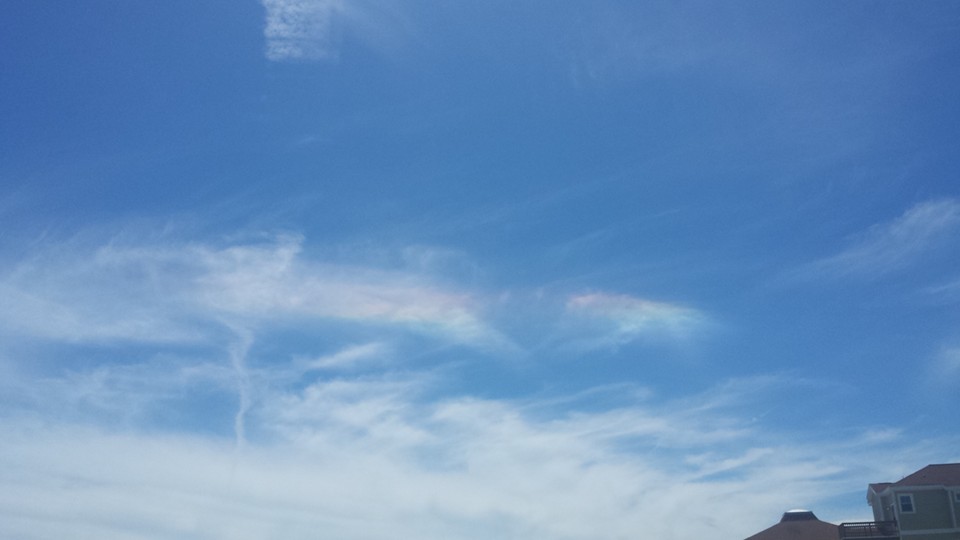
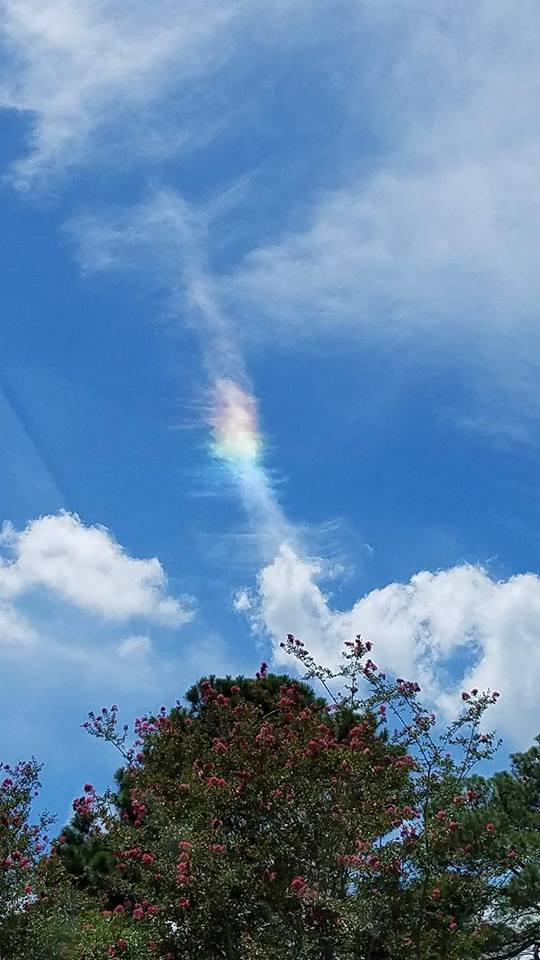
Stay safe and cheers from us at WeatherFlow!
Shea Gibson
SE/East Coast Wind Forecasting
New Station Project/ Outreach
Twitter: @WeatherFlowCHAS
Facebook: Shea Gibson – WeatherFlow and Chucktown Wind Report
Sources: Solar System Scope, The Photographers Ephemeris, Mr. and Mrs. Globetrot (train track picture), Harrison Ruess

